Surrogate Optimization of Multidimensional Function
This example shows the behavior of three recommended solvers on a minimization problem. The objective function is the multirosenbrock function:
type multirosenbrockfunction F = multirosenbrock(x)
% This function is a multidimensional generalization of Rosenbrock's
% function. It operates in a vectorized manner, assuming that x is a matrix
% whose rows are the individuals.
% Copyright 2014 by The MathWorks, Inc.
N = size(x,2); % assumes x is a row vector or 2-D matrix
if mod(N,2) % if N is odd
error('Input rows must have an even number of elements')
end
odds = 1:2:N-1;
evens = 2:2:N;
F = zeros(size(x));
F(:,odds) = 1-x(:,odds);
F(:,evens) = 10*(x(:,evens)-x(:,odds).^2);
F = sum(F.^2,2);
The multirosenbrock function has a single local minimum of 0 at the point [1,1,...,1]. See how well the three best solvers for general nonlinear problems work on this function in 20 dimensions with a challenging maximum function count of only 200.
Set up the problem.
N = 20; % any even number mf = 200; % max fun evals fun = @multirosenbrock; lb = -3*ones(1,N); ub = -lb; rng default x0 = -3*rand(1,N);
Set options for surrogateopt to use only 200 function evaluations, and then run the solver.
options = optimoptions('surrogateopt','MaxFunctionEvaluations',mf); [xm,fvalm,~,~,pop] = surrogateopt(fun,lb,ub,options);
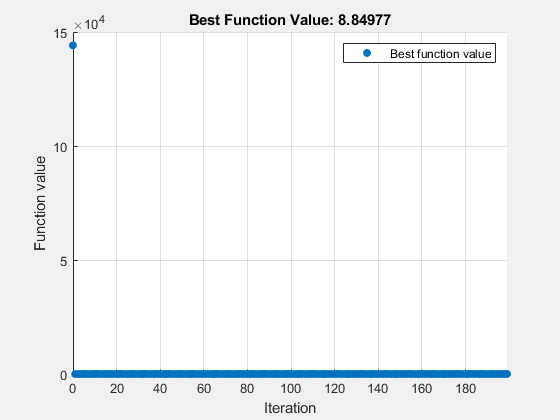
surrogateopt stopped because it exceeded the function evaluation limit set by 'options.MaxFunctionEvaluations'.
Set similar options for patternsearch, including a plot function to monitor the optimization.
psopts = optimoptions('patternsearch','PlotFcn','psplotbestf','MaxFunctionEvaluations',mf); [psol,pfval] = patternsearch(fun,x0,[],[],[],[],lb,ub,[],psopts);
patternsearch stopped because it exceeded options.MaxFunctionEvaluations.
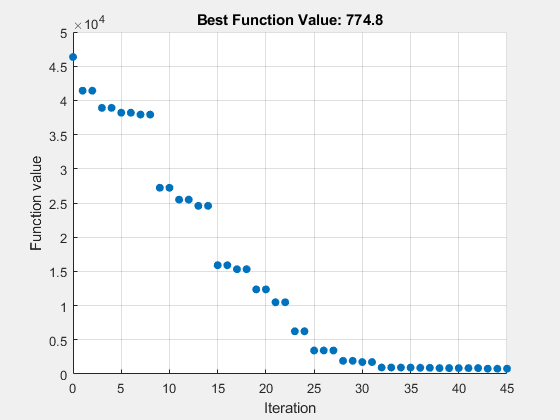
Set similar options for fmincon.
opts = optimoptions('fmincon','PlotFcn','optimplotfval','MaxFunctionEvaluations',mf); [fmsol,fmfval,eflag,fmoutput] = fmincon(fun,x0,[],[],[],[],lb,ub,[],opts);
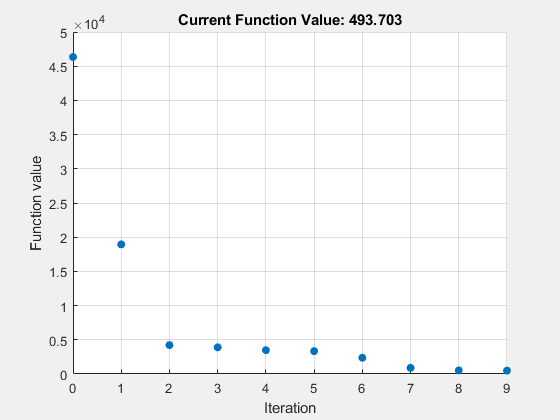
Solver stopped prematurely. fmincon stopped because it exceeded the function evaluation limit, options.MaxFunctionEvaluations = 2.000000e+02.
For this extremely restricted number of function evaluations, the surrogateopt solution is closest to the true minimum value of 0.
table(fvalm,pfval,fmfval,'VariableNames',{'surrogateopt','patternsearch','fmincon'})
ans=1×3 table
surrogateopt patternsearch fmincon
____________ _____________ _______
8.8498 774.8 493.7
Allowing another 200 function evaluations shows that the other solvers rapidly approach the true solution, while surrogateopt does not improve significantly. Restart the solvers from their previous solutions, which adds 200 function evaluations to each optimization.
options = optimoptions(options,'InitialPoints',pop);
[xm,fvalm,~,~,pop] = surrogateopt(fun,lb,ub,options);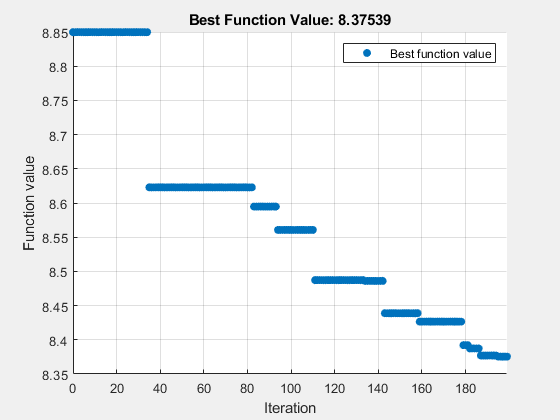
surrogateopt stopped because it exceeded the function evaluation limit set by 'options.MaxFunctionEvaluations'.
[psol,pfval] = patternsearch(fun,psol,[],[],[],[],lb,ub,[],psopts);
patternsearch stopped because it exceeded options.MaxFunctionEvaluations.
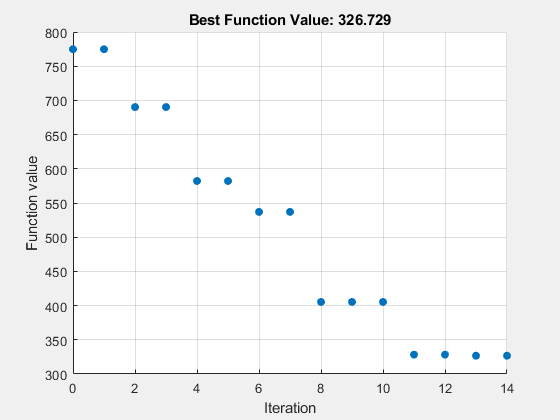
[fmsol,fmfval,eflag,fmoutput] = fmincon(fun,fmsol,[],[],[],[],lb,ub,[],opts);
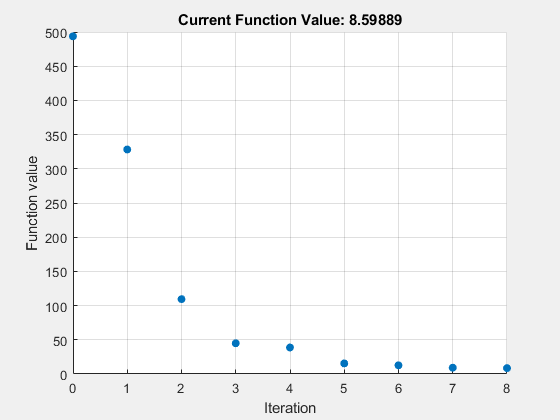
Solver stopped prematurely. fmincon stopped because it exceeded the function evaluation limit, options.MaxFunctionEvaluations = 2.000000e+02.
table(fvalm,pfval,fmfval,'VariableNames',{'surrogateopt','patternsearch','fmincon'})
ans=1×3 table
surrogateopt patternsearch fmincon
____________ _____________ _______
8.3754 326.73 8.5989